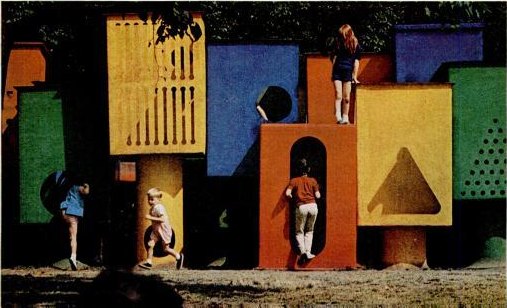
Does any headline capture the 1960's ideal playground better than "A Child's Garden of Plastic Delights"?
Beginning in 1965, Manhattan designer/dad Jerry Lieberman, under the sponsorship of Pepsi-Cola and the National Recreation and Park Association, worked to develop a cost-effective, flexible playground using repurposed industrial products and materials.
Lieberman turned a fiberglass gas storage tank on its side and punched round holes in it. He filled the giant plastic dish-shaped engine covers of a DC-9 with large-grained plastic sand. He made a climbing landscape out of pool noodle-like extruded foam. And he created a multi-level house maze [above] out of perforated polyethylene storage bins cadged from the textile industry.
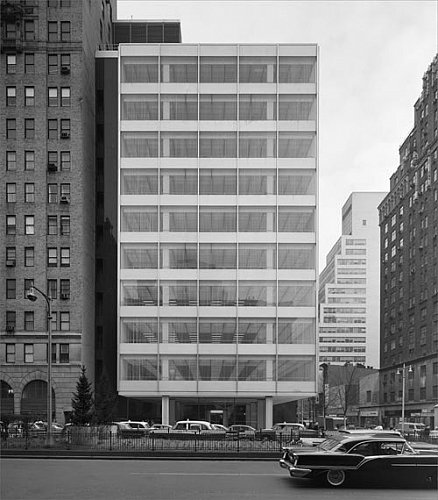 Pepsi actually installed this playground in the lobby of its Park Avenue headquarters in the Fall of 1966. [The nice Skidmore Owings & Merrill building is on the SW corner of 59th St, which, alas, doesn't look quite as pristine as it did when Ezra Stoller shot it in 1960.] That's where the New York Times covered it, and where the always quotable NYC Parks Commissioner Thomas Hoving slapped the side of the maze and said, "This I've got to have! This is an environment. It's a totally new use of a hell of an attractive material--and it's cheap! I want to move this into the really stinking, lousy areas of the city and give those kids something."
Pepsi actually installed this playground in the lobby of its Park Avenue headquarters in the Fall of 1966. [The nice Skidmore Owings & Merrill building is on the SW corner of 59th St, which, alas, doesn't look quite as pristine as it did when Ezra Stoller shot it in 1960.] That's where the New York Times covered it, and where the always quotable NYC Parks Commissioner Thomas Hoving slapped the side of the maze and said, "This I've got to have! This is an environment. It's a totally new use of a hell of an attractive material--and it's cheap! I want to move this into the really stinking, lousy areas of the city and give those kids something."
Hoving's plan appears to have been to have Pepsi, already a sponsor for many Parks Dept. programs, pay for the construction of these quick, cheap, & modern playgrounds around the city. In a 1967 press release for an unrelated Lieberman collaboration, he called the project the Pepsi-Cola Playscape.
But it doesn't seem like the venture got much traction. The Times said the prototypes would be installed in a "vest-pocket park in Brooklyn, if the community accepts it." But the LIFE Magazine article the great playground design blog Playscapes tracked down says they were installed "on a knoll overlooking the Hudson," which sounds like Manhattan to me.
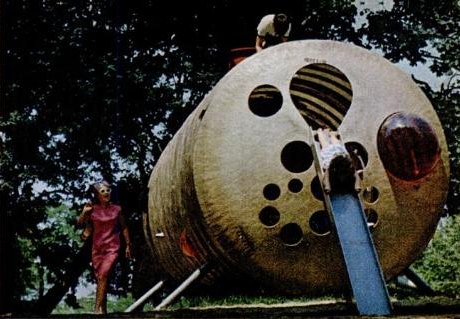
And the whiteness of the kids inside makes me think it was Riverside Park, the site where Louis Kahn and Isamu Noguchi's legendary playground proposal had been killed a few years earlier by wealthy parkfront residents' opposition to an influx of "slum children."
Lieberman was definitely not alone in his attempt to adapt industrial and commercial resources to solve the "slum children" problem. His playground equipment emerged at the same time as Sesame Street, the Ghetto Kids' Great Hope. What the city called "pocket parks" was really just a euphemism for "vacant lots," which is, not coincidentally, where Big Bird built his nest.
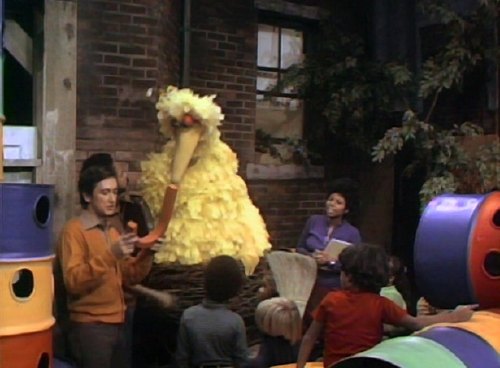
From the show's premiere in 1969 until around 2002, Big Bird lived among a playscape of brightly painted, portholed oil barrels. The barrels were iconic enough for Fisher-Price to include three of them in the Sesame Street Playhouse in 1976, which my little sister and brother had, and which is still sitting in Grams' basement playroom. [The screencap above is from the 1974 season. The ad below is from fplpworld.com.]
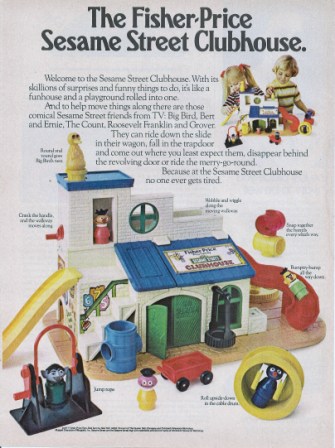
In 1967, right after the Pepsi show closed, Lieberman applied for a patent for his Play Maze, which was granted in 1969. But it doesn't seem like it ever went into production--or that any more textile bins were transformed into ghetto delights.
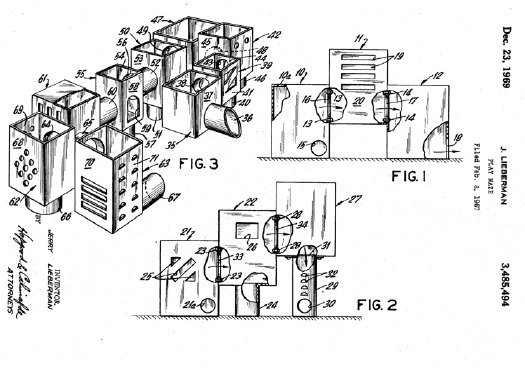
By 1971, Lieberman had moved from the city to Long Island, and from repurposing tanks to designing fiberglass equipment from scratch. At an exhibit at the Owens Corning Fiberglass Center, he explained how kids' "recre-educational" needs differed between the ghetto and the suburbs. Then he proceeded to talk smack about the adventure playgrounds NYC had installed in Central Park, presumably instead of his own designs:
Until recently, playgrounds have been sort of architectural monuments, a lot of stone pyramids, generally designed by architects, and usually bland in color. Why can't play structures be bright? Children are very responsive to color.And there, in a city-fleeing-suburban nutshell, is the reason for the red/yellow/blue molded plastic hegemony of the last thirty years.
Mid-Century Playground of Big Tanks and Boxes, 1967 [playscapes blog, via dt reader nelson]
"A Child's Garden of Plastic Delights," LIFE Jul 14, 1967 [LIFE/Google Books]
Play Maze, Jerry Lieberman, Patent no. 3,485,494 Filed: Feb 8, 1967, Issued: Dec 23,1969 [google patents]
"Fantasy plus Flexibility on Playground Important" Dec 26, 1971 [google newspapers]



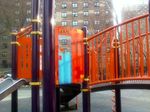


I totally had the Sesame Street Clubhouse when I was a kid. I had not thought of it until just now. I don't remember the yellow thing that Grover is in. It must have gone missing quite early.
I was born in 1974.
My kids (4 and 20months) have the Sesame Street Clubhouse and all of the accessories (minus the Count), courtesy of Grandma and a full midwestern basement. They also have a few other playhouses and accessories that were released in the same line. We have SO many other modern high-end toys in the house, but the Sesame Street Clubhouse gets the most use, hands-down, out of any other toy they own. It's AWESOME! Heck, I love to play with it! Yes, condemn me as a failed parent if you must; I believe the whole line was discontinued when kids started choking on the "people" and getting them stuck on their fingers...